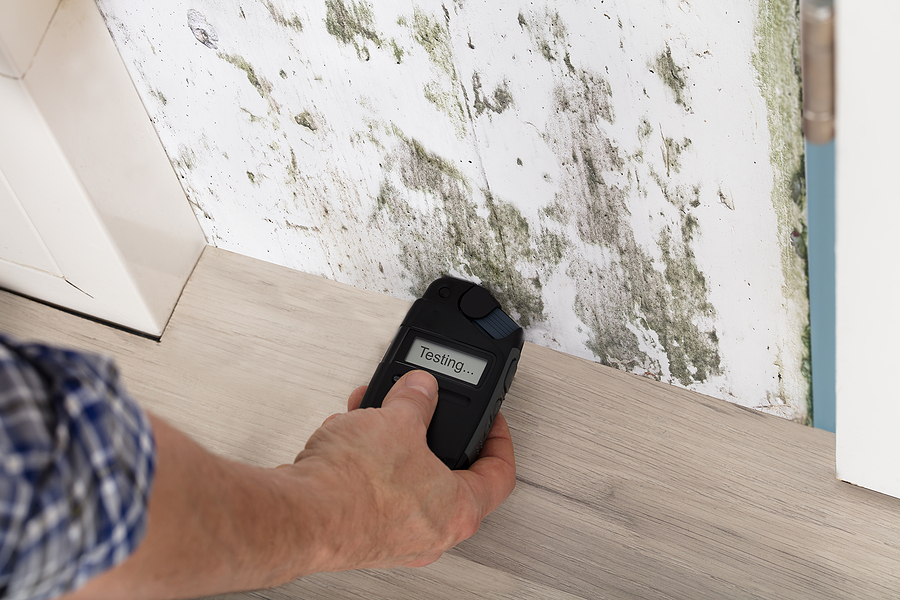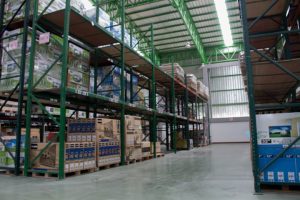When it comes to installing flooring over concrete, there’s one crucial step that often gets overlooked: moisture testing. Whether you’re laying tile, hardwood, carpet, or planning a sleek concrete floor polishing finish, testing the moisture levels in your concrete slab isn’t just a precaution; it’s a necessity. Let’s break down why moisture testing for concrete floors is so important, what happens when you skip it, and how to do it right. Because when it comes to floors, what’s underneath matters just as much as what’s on top.
Why Moisture Matters in Concrete
Concrete may look dry on the surface, but it’s full of tiny pores that can hold moisture long after the slab is poured.
Over time, this moisture can slowly migrate upward, especially if there’s no proper moisture barrier underneath. If you install flooring over a concrete slab without testing it first, that hidden moisture can cause serious problems down the line.
Moisture trapped under the flooring can lead to:
- Warping and buckling of hardwood or laminate
- Loose or bubbling vinyl
- Carpet adhesive failure
- Mold and mildew growth
- Ruined investments in floor materials and labor
And if you’re investing in concrete floor polishing, any excess moisture can cause discoloration, uneven curing, and long-term durability issues.
The Cost of Skipping Moisture Testing
Let’s say you’ve just spent thousands of dollars on brand-new flooring. The space looks great, until a few weeks later, the floor starts to warp or peel. Suddenly, that fresh installation is a complete redo.
Research has shown that moisture-related floor failures account for over $1 billion annually in damage in the U.S. That’s a costly mistake for something that can be prevented with a simple test.
What Is Moisture Testing for Concrete Floors?
Moisture testing for concrete floors is the process of checking how much water vapor is present in the slab or how much is being emitted into the air. There are different methods, but the goal is always the same: to make sure the slab is dry enough to safely install flooring.
Here are the most common types of tests:
Relative Humidity (RH) Testing
RH testing uses probes inserted into the slab to measure the internal humidity. This is one of the most accurate ways to check concrete slab moisture levels, especially for flooring that covers large areas.
Calcium Chloride Test (MVER)
This test measures the moisture vapor emission rate. A dish of calcium chloride is placed on the surface, covered, and left for 60–72 hours. The increase in weight shows how much moisture was emitted.
Surface Moisture Meters
These handheld devices give a quick read of surface moisture. While not as thorough as RH or calcium chloride tests, they’re a useful initial check.
When Should You Test Concrete for Moisture?
Moisture testing should be done before any flooring installation, no matter how old or new the concrete is. Even slabs that are several years old can still emit moisture if conditions are right (or wrong).
Here are a few important scenarios where testing is essential:
- New construction: Concrete needs adequate time to dry and cure. Testing confirms it’s ready.
- Renovations: Older slabs may have absorbed moisture from leaks or changing conditions.
- Basements: Below-grade spaces are more prone to moisture buildup.
- Polished concrete installations: Moisture can affect the adhesion of densifiers and sealers.
What’s the Safe Moisture Level?
That depends on the flooring material you plan to use. Most manufacturers provide specific limits. For example:
- For hardwood, the relative humidity inside the slab should be below 75%.
- Vinyl and carpet adhesives typically require emission rates under 3 lbs/1,000 sq ft/24 hrs (as measured by calcium chloride tests).
Testing helps you make informed decisions and choose the right moisture barrier or sealant if needed.
Why Moisture Testing Is Critical for Polished Concrete Floors
If you’re opting for concrete floor polishing, you might think moisture isn’t an issue—after all, there’s no wood or glue involved, right? Wrong.
Moisture still plays a big role in how the polish holds up. Excess moisture can:
- Interfere with densifier penetration
- Causes hazing or clouding of the polish
- Prevent proper bonding of sealers
- Lead to cracks, flaking, or “ghosting” in the finish
A polished floor should be smooth, durable, and flawless, not a future repair job waiting to happen. Moisture testing gives you the green light to polish with confidence.
Moisture Doesn’t Just Come from Below
It’s also worth noting that ambient conditions affect your slab’s moisture behavior. A building that doesn’t have HVAC running yet can trap humidity, especially in summer. Seasonal weather changes can make concrete dry more slowly or even reabsorb moisture.
That’s why reputable contractors test and monitor concrete slab moisture levels multiple times, before and during the project.
What to Do If Moisture Levels Are Too High
If testing shows that your slab is too wet, don’t panic. There are plenty of solutions to get things back on track. Sometimes the best move is to simply wait it out. If the concrete is still in its curing phase, giving it additional time to dry can make a big difference. Concrete takes weeks, sometimes even months, to fully dry, depending on weather, slab thickness, and environmental conditions.
Another option is to install a vapor barrier. This is typically a sheet of plastic or an epoxy moisture-blocking layer that sits between the concrete and your flooring. It helps prevent residual moisture from reaching and damaging the flooring materials above.
You can also look into moisture-resistant adhesives. These are specially formulated for high-moisture environments and can provide a stronger, more reliable bond even when the slab isn’t perfectly dry. Many flooring manufacturers recommend specific adhesive types for this exact reason.
In some cases, switching up your flooring choice might be the simplest path forward. Polished concrete or certain types of tile, for example, can handle moisture far better than hardwood or vinyl and may be ideal for basements or ground-level installations.
Whatever the case, it’s always better to address moisture issues upfront rather than face expensive repairs or replacements later. Being proactive now will save you time, money, and stress down the road.
Get a Pro to Test It Right
Whether you’re installing hardwood, carpet, or going with a modern concrete floor polishing finish, moisture testing for concrete floors is an essential first step. Ignoring it can cost you thousands, ruin your flooring, and lead to long-term headaches you don’t need.
The bottom line? Don’t guess. Test.
At Custom Concrete Prep & Polish, we offer expert moisture testing for concrete floors as part of our comprehensive prep services. Our team uses industry-approved methods to assess your concrete slab moisture levels and ensure a successful installation, whether you’re planning a new floor or a polished concrete upgrade.
Let us help you build from the ground up, the right way. Schedule a consultation today and get peace of mind before you install.



